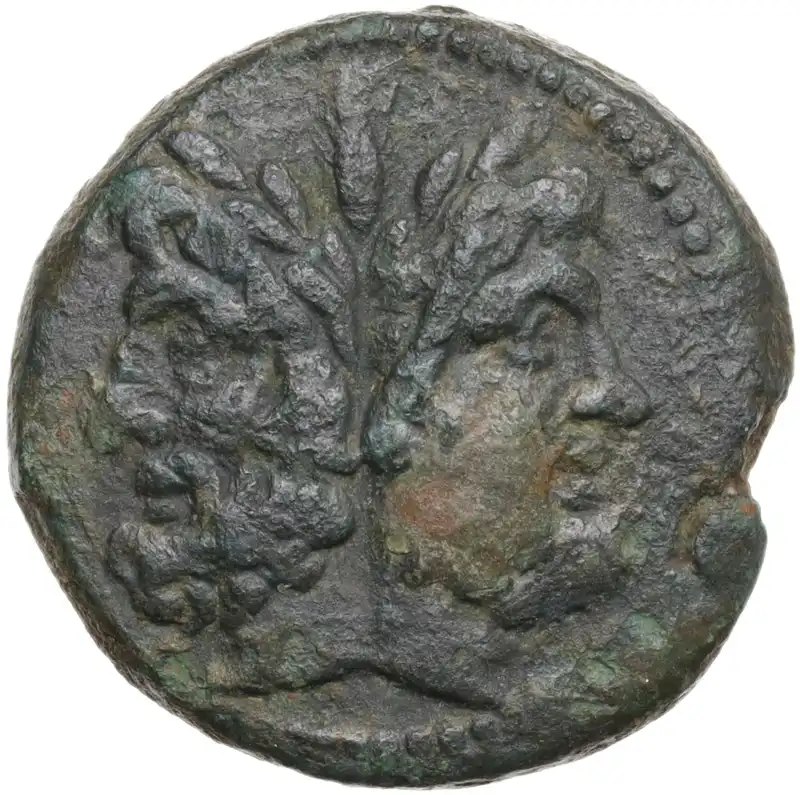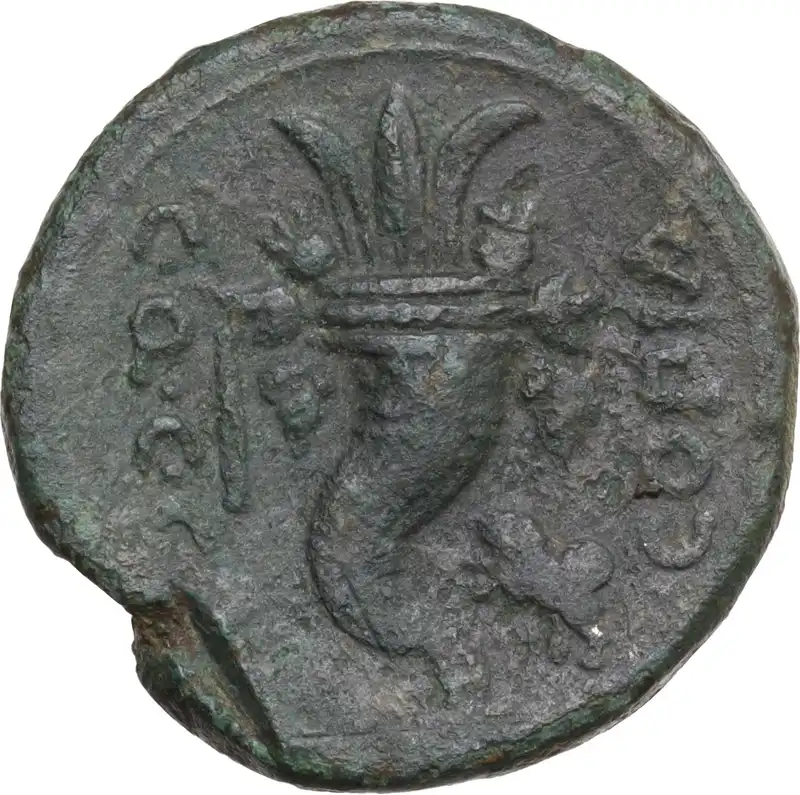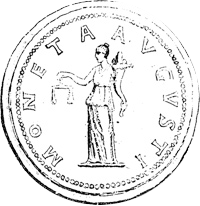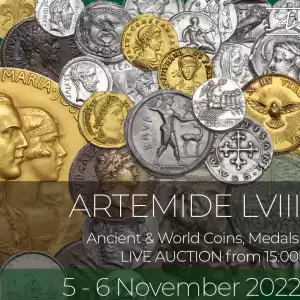

Greek Italy. Southern Lucania, Copia. AE As, c. 150s BC. C(atulus?) Antestius moneyer. Obv. Laureate head of Janus; above, I. Rev. Cornucopiae; to left, C·Q·C·C[...] and staff; to right, COPIA and Maltese dog with both forepaws raised. HN Italy 1935; HGC 1 970. 8.30 g. 22.00 mm. R. Very rare and in excellent condition for the issue. Lovely deep green patina. Apparently unpublished with the evocative symbol of Maltese puppy. Good VF. Alluring issue, of great historical interest. Exteremely rare.
This As shows on reverse the symbol Maltese dog with both forepaws raised, which clearly refers to Republican issue of the moneyer C. Antestius (otherwise unknown), dated 146 BC.
Garrucci describes two different Roman issues for Copia, one without the name of the moneyer, with only ethnic COPIA and one that also presents single letters to be related to the name and position of the moneyer. Although he publishes on plates two examples with symbols (rostrum and olive/laurel branch), he does not directly relate them to the issuing magistrate.
Rutter also describes 'issue marks' which include the proper names and titles of the magistrate and puts these issues in relation to the naval activity of Rome in the war against Antiochus III and Perseus.
On the other hand, it seems clear from our example, which corresponds in the symbol and in the dates to the Republican issue of C. Antestius, that the symbols were explanatory of the issuing authority. And the use of the same 'talking symbol' on the coins of Copia and on the Republican coins, would return an added value to the puppy dog and could confirm Crafword's hypothesis on the magistrate's cognomen: Catulus (little dog).
This As shows on reverse the symbol Maltese dog with both forepaws raised, which clearly refers to Republican issue of the moneyer C. Antestius (otherwise unknown), dated 146 BC.
Garrucci describes two different Roman issues for Copia, one without the name of the moneyer, with only ethnic COPIA and one that also presents single letters to be related to the name and position of the moneyer. Although he publishes on plates two examples with symbols (rostrum and olive/laurel branch), he does not directly relate them to the issuing magistrate.
Rutter also describes 'issue marks' which include the proper names and titles of the magistrate and puts these issues in relation to the naval activity of Rome in the war against Antiochus III and Perseus.
On the other hand, it seems clear from our example, which corresponds in the symbol and in the dates to the Republican issue of C. Antestius, that the symbols were explanatory of the issuing authority. And the use of the same 'talking symbol' on the coins of Copia and on the Republican coins, would return an added value to the puppy dog and could confirm Crafword's hypothesis on the magistrate's cognomen: Catulus (little dog).





